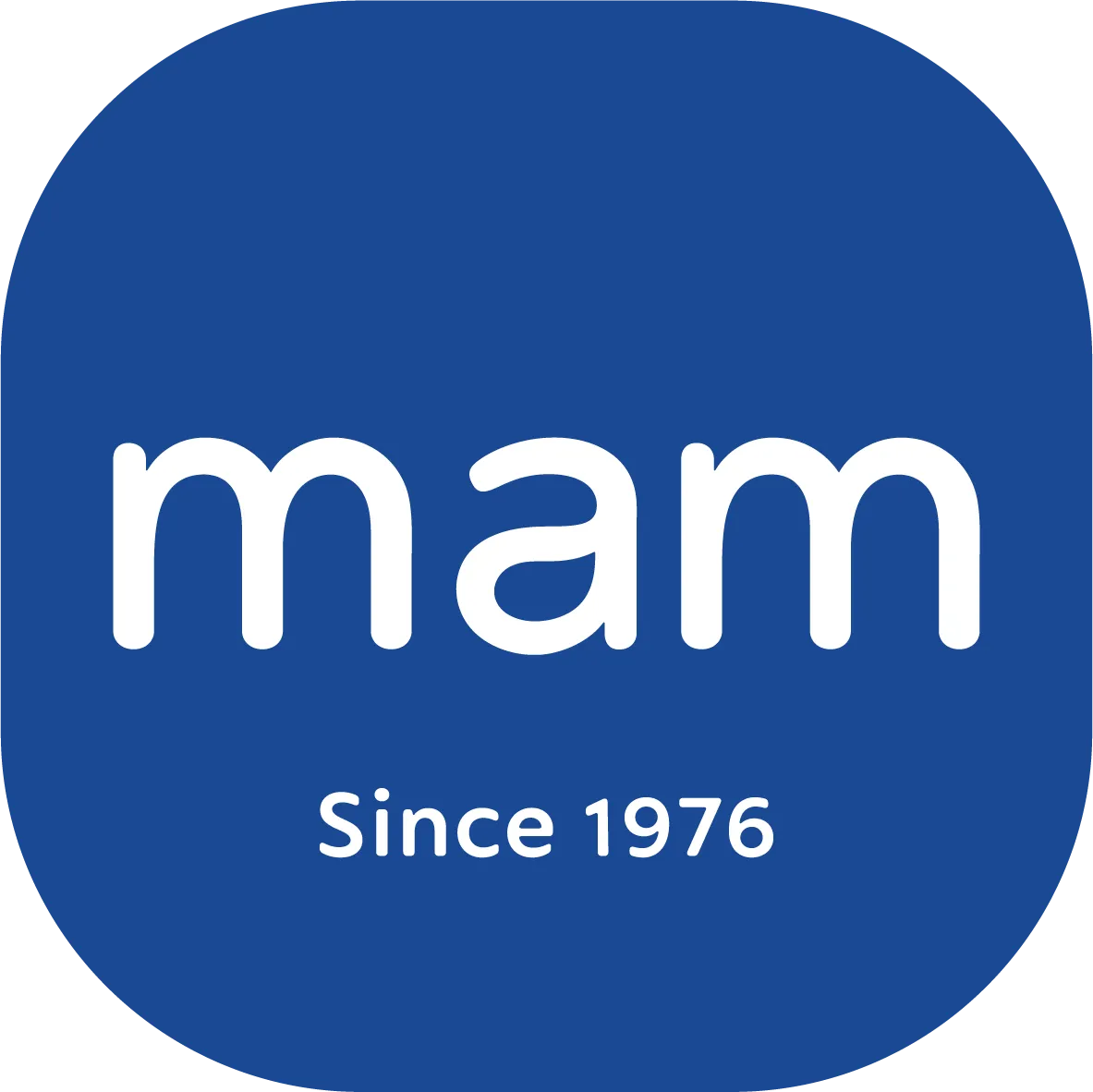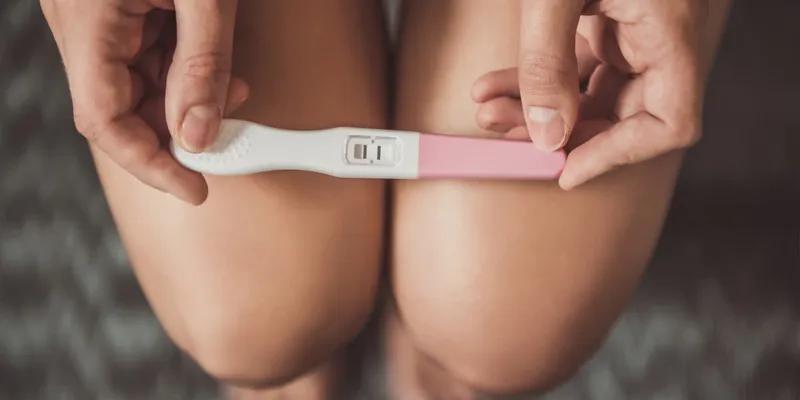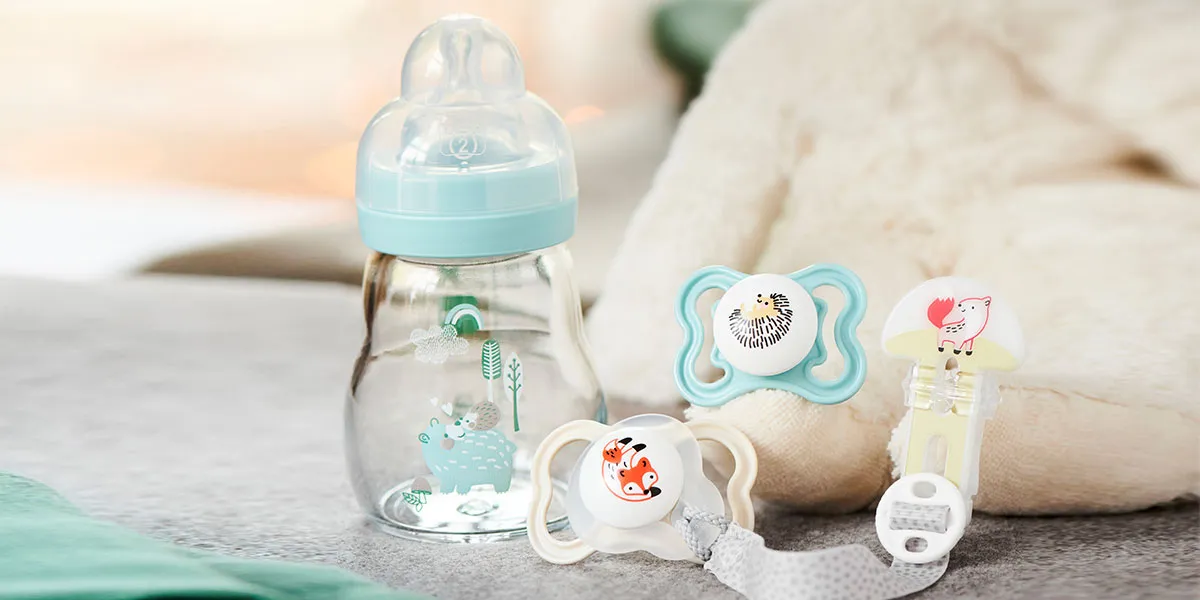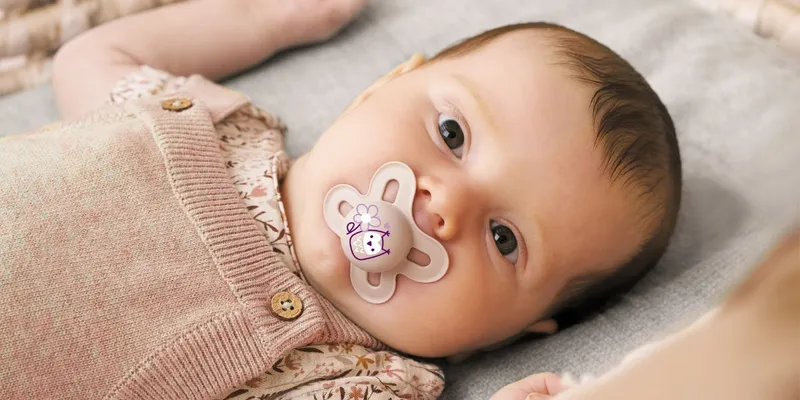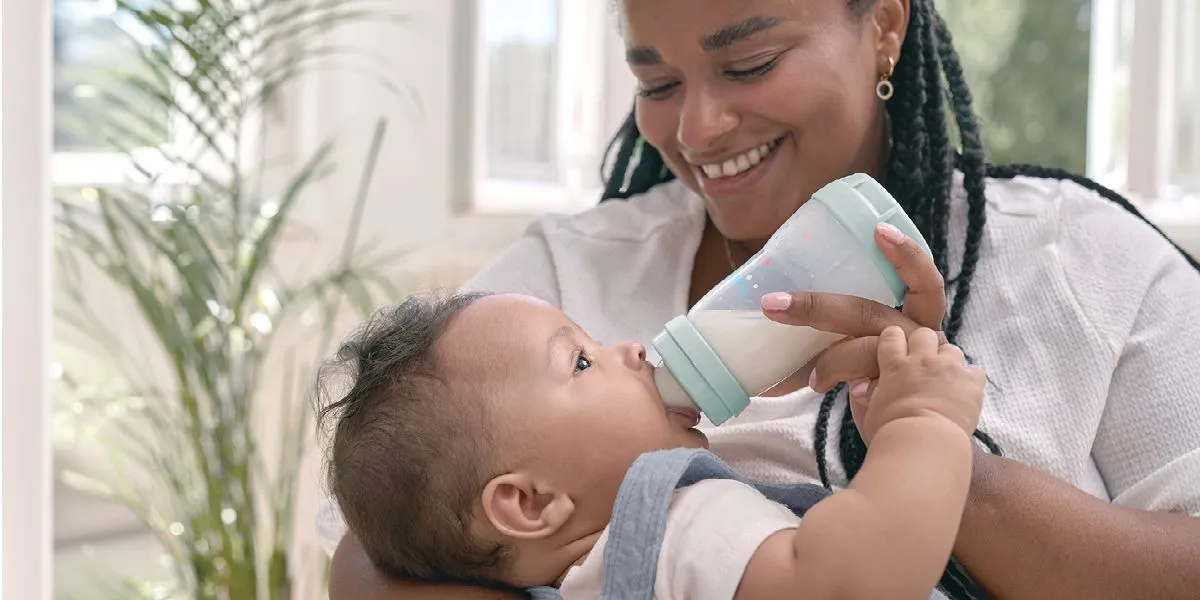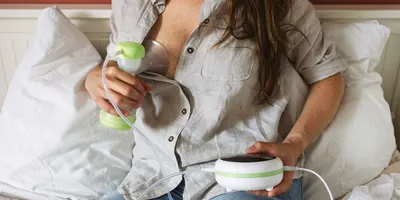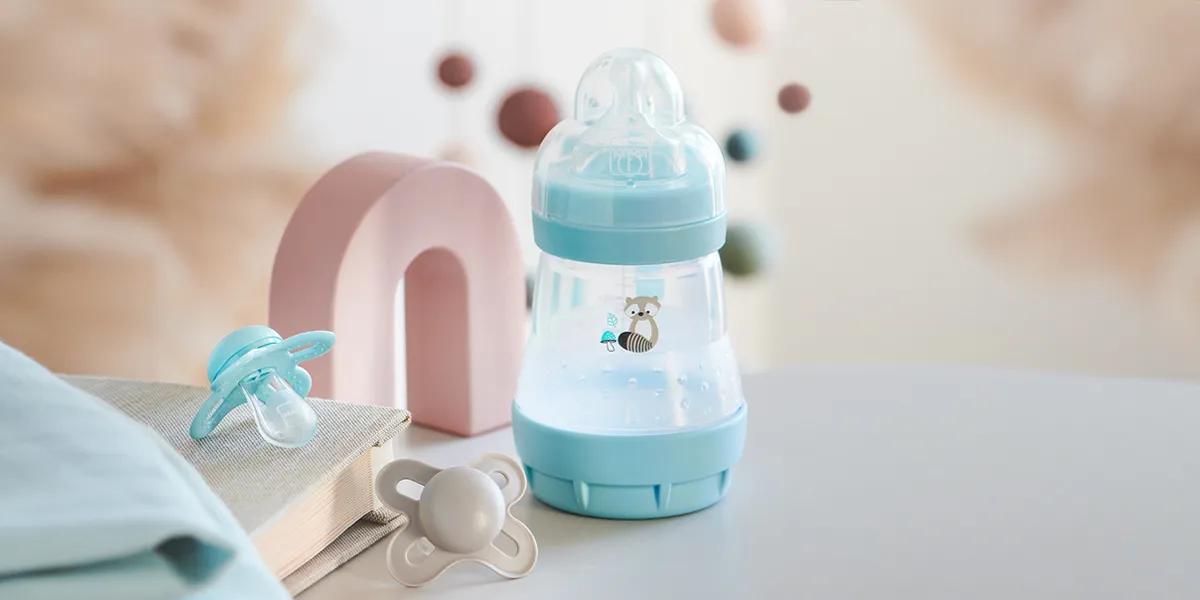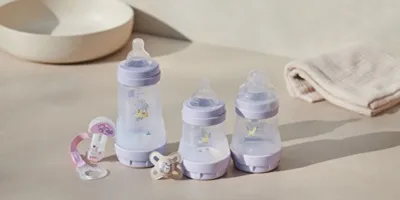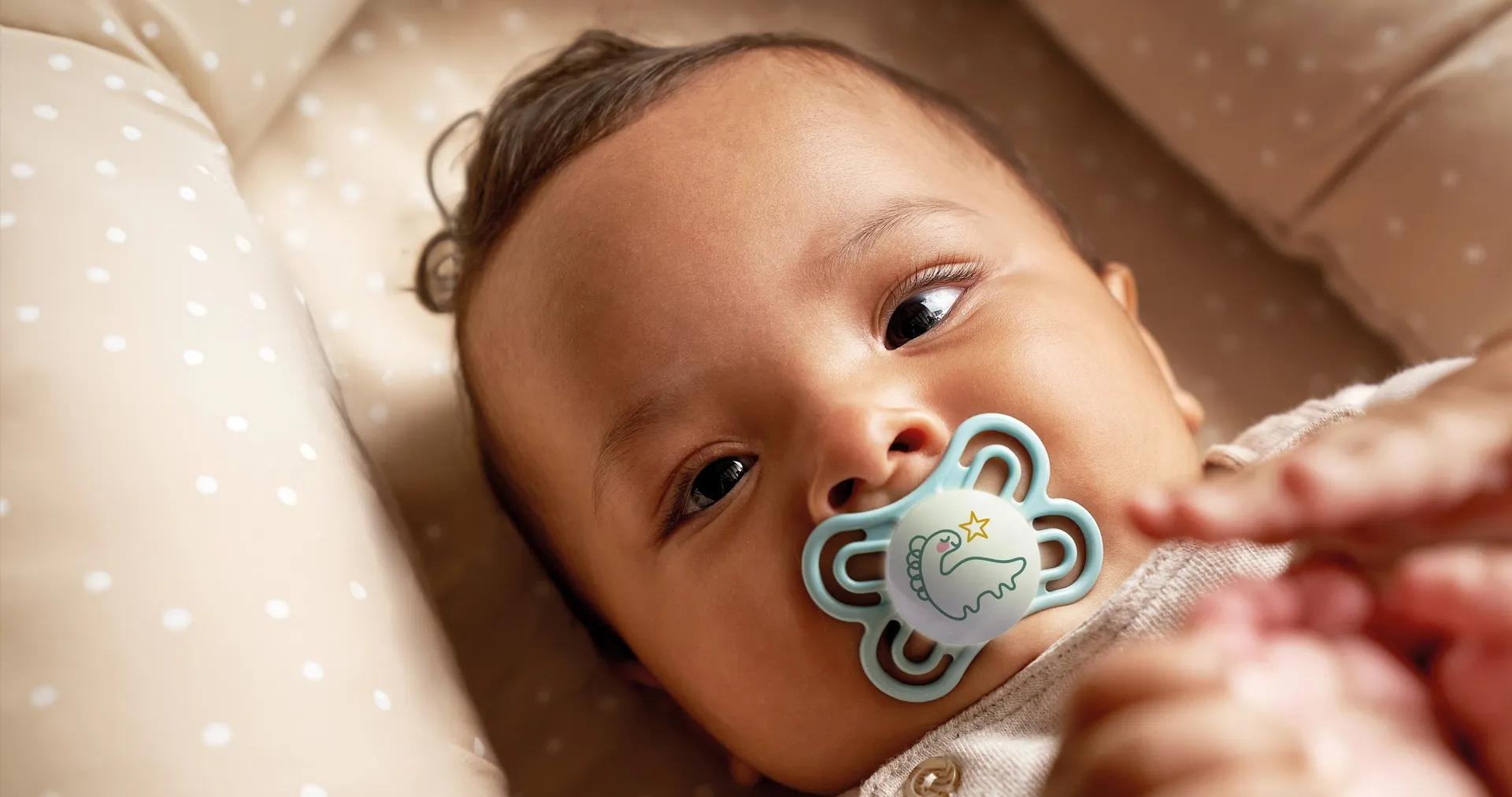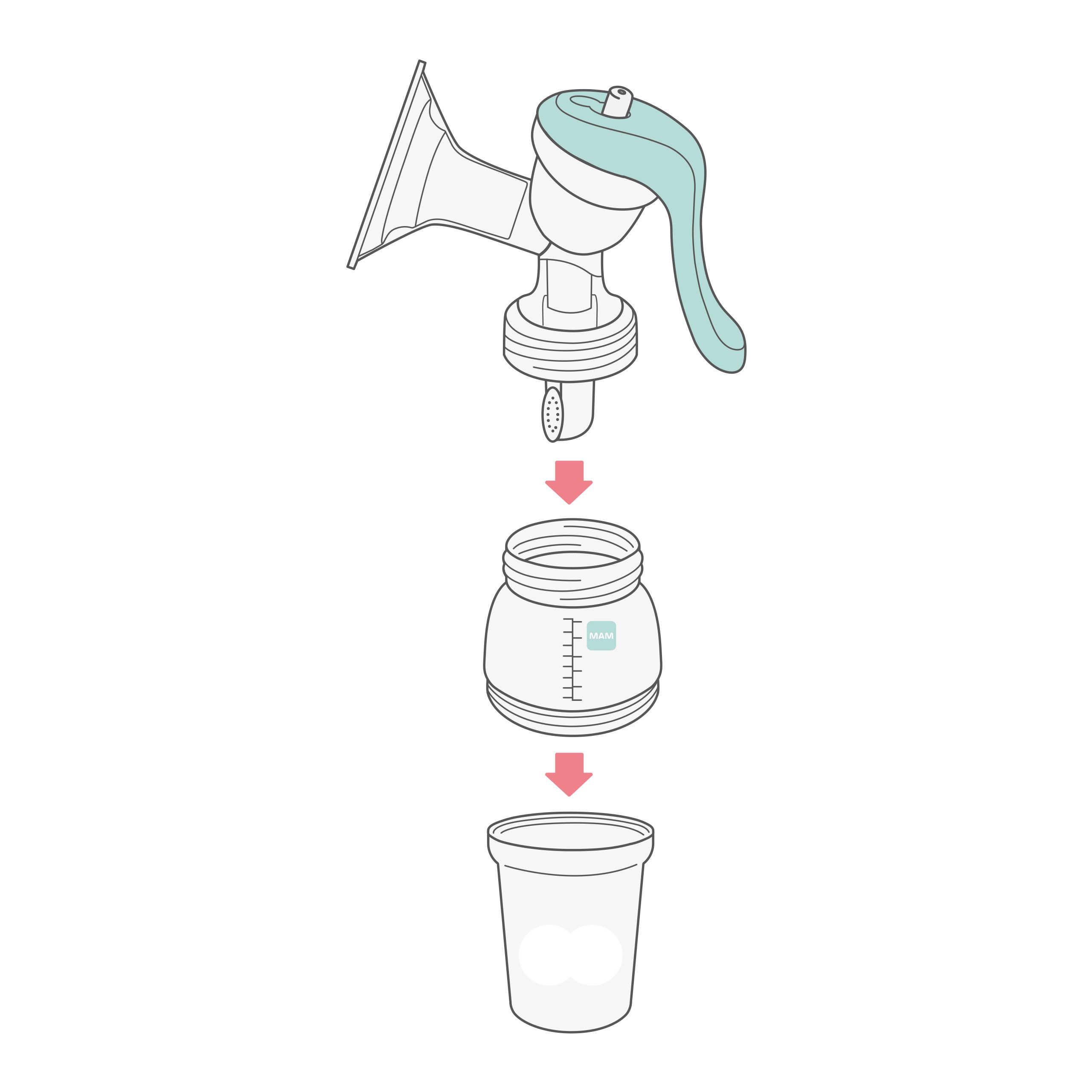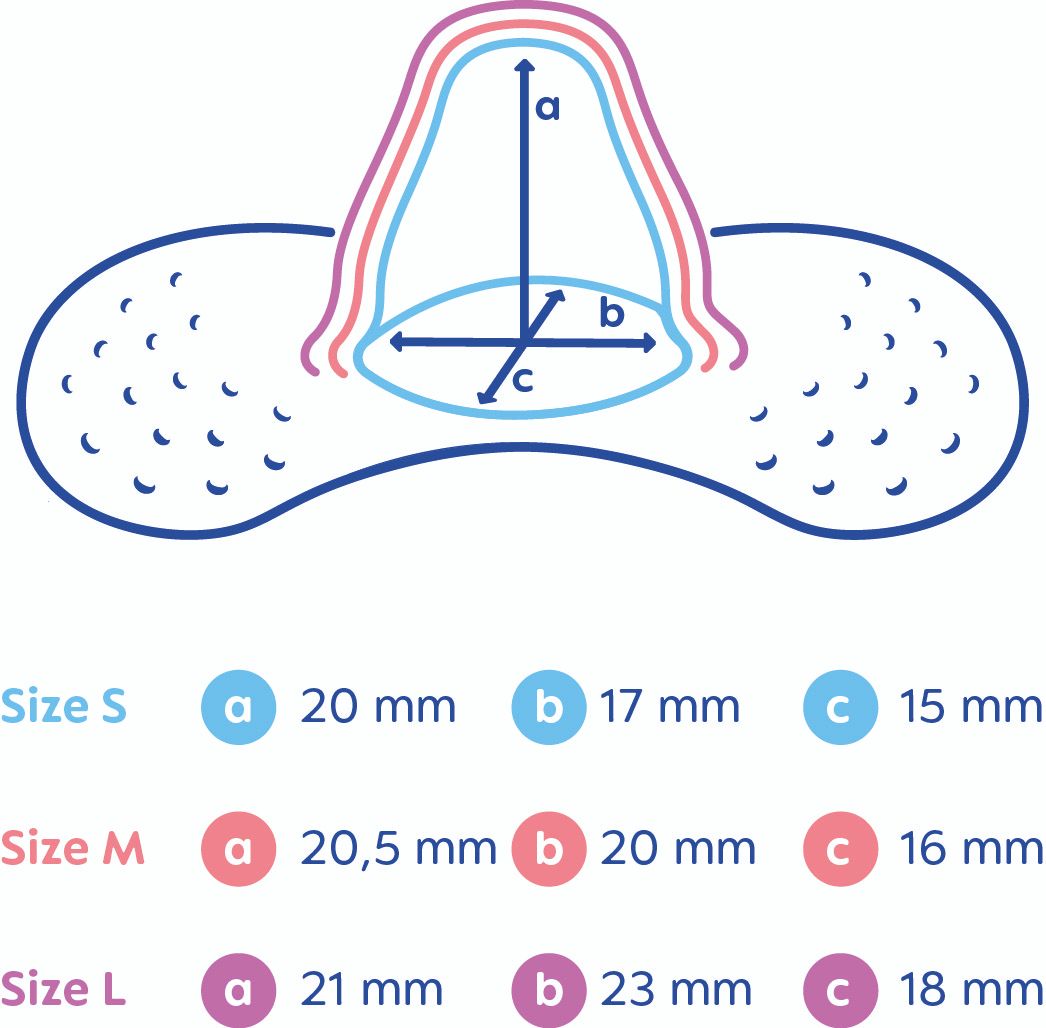Clean nipple shields before first and after each use.
Before first use place nipple shields in boiling water for 5 minutes. This is to ensure hygiene.
Cleaning
There are two recommended methods for cleaning MAM Nipple Shields:
1. Cleaning by hand
Begin by rinsing the MAM Nipple Shields in cold, clear water. Then wash thoroughly in warm, soapy water using a mild detergent. After washing, rinse the shield with cold, clean water.
2. Cleaning in the dishwasher
The Nipple Shields can be cleaned in the dishwasher at a temperature of max. 65 °C, using commercially available dishwashing detergent. It is recommended to place them on the top rack of the dishwasher.
Sterilising
There are four recommended methods for sterilising MAM Nipple Shields:
1. Sterilisation through boiling
Boil the Nipple Shields in fresh water for at least 5 minutes.
2. Sterilisation using the MAM Microwave Steriliser & Carry Box 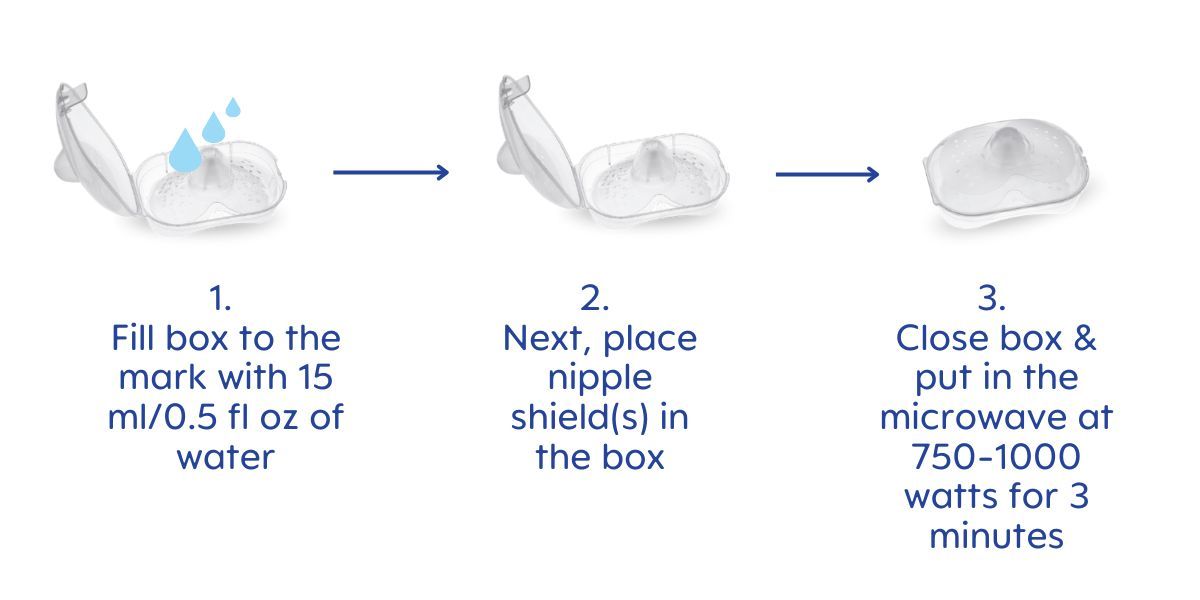
When using the self-sterilising method, please ensure the Nipple Shields, box and microwave (including the waveguide-cover and turntable) are COMPLETELY CLEAN and free from dirt, food residue, fat or oil splashes. If not, this could lead to the product or box melting and the microwave sparking or the waveguide cover burning!
- First, hold box and fill to the mark with 15 ml / 0.5 fl oz of water.
- Next, place nipple shield(s) in the box, up to 2 shields can be sterilised in one box.
- Close the box and heat in the microwave at 750 – 1000 watts for 3 minutes.
Up to 2 boxes can be sterilised at the same time.
Follow the user manual of your microwave.
- Don’t put the steriliser box at the center of the turntable.
- Don’t leave your microwave unattended during the sterilising process!
Stop the microwaving-process immediately if whole water is vaporised.
- Allow to cool for at least 3 minutes. Open microwave.
- CAUTION! The box, water and Nipple Shields may still be very hot after the 3-minute cooling period!
- After microwave sterilising, Nipple Shields kept in the closed box will remain disinfected for up to 48 hours.
- For immediate use open box and drain remaining water.
- Leave Nipple Shields to dry in slightly open box.
- Check the temperature of the Nipple Shields before use!
- Improper water level, power level or time setting can damage the microwave, Nipple Shields and box and result in poor disinfection!
- For use only with MAM Nipple Shields!
- Keep the steriliser box away from children.
3. Steam sterilising
Electric or microwave steam sterilising according to manufacturers instructions.
4. Liquid sterilising solution
In order to store sterilised nipple shields hygienically, keep them in the closed sterilised carry box.
